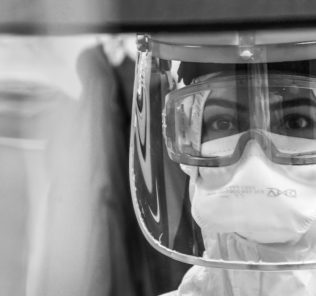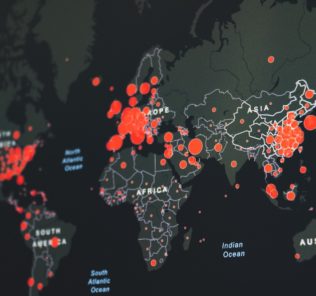How One University Pivoted Their Standardized Patient Program to Online Learning During COVID-19
Many Healthcare Simulation champions are having to Rapidly deploy online learning tools to continue educational and training goals for clinical learners. Here is an impressive story about the University of Minnesota moved its entire in-person instruction and clinical rotations to online learning with their pool of Standardized Patients and Zoom meetings. In just three short weeks, the administrators have deemed it a massive success — and we entirely agree!
M Simulation Pivots to Online Delivery to Meet Critical Clinical Training Needs During the COVID-19 Pandemic
Jennifer Johnson writes: When the University of Minnesota announced on March 12, 2020, that all in-person classes at its five campuses were moving to online learning, it was a first in the University’s history. Campus Public Health Officer and Vice President for Clinical Affairs Jakub Tolar, MD, PhD, had announced that all in-person instruction, including clinical rotations, was suspended and moving to alternative instruction a day earlier.
Sponsored Content:
On March 13, Tolar’s update included a challenge to colleagues: “Leadership is not measured by meetings or committees,” he wrote. “It is the ability and willingness to stand up to the challenge and deliver a rational, measured, effective response. Over and over again.” During a worldwide pandemic, the critical role of the University’s M Simulation team in preparing the future healthcare workforce is more vital than ever. In a rapid COVID-19 response, the team mobilized to deliver its medical simulation online.
“The team at M Simulation was steeped in the logistics to pivot to online simulation education,” said Clark. “I was monitoring how others were responding on a national and international level. This is an unprecedented time for us as an industry, which necessitates the expedited and immediate move to online platforms.” A key component of M Simulation is the Standardized Patient (SP) Program. SPs are individuals from the community who are coached to accurately and consistently recreate the history, personality, physical findings and emotional state of an actual patient.
Since 1963, SPs have been trained to serve as an integral part of health sciences education across the country. According to M Simulation Education Director Anne Woll, MS, there are approximately 330 trained SPs who currently serve on-call for educational contact each year with students across the health sciences and medical residents on the Twin Cities and Duluth campuses, as well as the regional healthcare community.
Using the Zoom platform, a group of seven M Simulation staff dove in to learn the logistics needed to implement formative Objective Structured Clinical Examinations (OSCEs) and to effectively train SPs online. By March 20, the M Simulation team had rolled out fully online formative OSCEs with health sciences students—a small OSCE for 15 graduate nursing students and a large-scale OSCE for 104 veterinary medicine students. “This was our first project we ran via Zoom,” said Woll. “It went remarkably well, and I attribute that to our high standards and commitment to helping each other out as we worked through the challenges.”
Sponsored Content:
Following the success of the two OSCE events, the team mobilized again to develop an online series via Zoom to share what they learned with others in the simulation industry. The Healthcare Simulation Online COVID-19 Response in 2020 and Beyond series was launched on March 27 with a webinar called “Zooming in with SPs in COVID-19 Response.” The participants learned how to manage breakout rooms in Zoom, tips for facilitating orientation and debriefing sessions with students and faculty, and suggestions for coaching SPs on how to deliver physical exam findings in a narrative style. “There’s a connection that happens online as you get to see how the SPs and students work through the stress and maintain their professionalism,” said Joe Miller, BS, CHSE, SP Program Coordinator for M Simulation.
“That connection has been very powerful to see.” With more than 300 participants attending, the Zoom meeting met its maximum capacity. Participants attending the webinar represented more than 30 states, four countries including Germany, the Netherlands, Estonia, and Canada, and a representative from the National Board of Medical Examiners. In real time, the M Simulation did troubleshooting to determine that the next session will set up as a Zoom webinar instead of a meeting to accommodate the demand.
Woll sees great potential in the Zoom platform with SPs and delivering online clinical training during the unprecedented times of the COVID-19 pandemic. “This has expanded how we can partner with our SPs and the community to deliver vital clinical training,” said Woll. “We’re prepared to engage in dialogue with faculty across the University and expand our services where they are needed.”
Read the Full M Simulation Story Here!
And then be sure to also check out our Comprehensive COVID-19 Medical Simulation Resource Page and our article on COVID-19 Crisis Courses for Educators: Rapid Transition to Online Learning From AALAS!
Lance Baily, BA, EMT-B, is the Founder / CEO of HealthySimulation.com, which he started in 2010 while serving as the Director of the Nevada System of Higher Education’s Clinical Simulation Center of Las Vegas. Lance also founded SimGHOSTS.org, the world’s only non-profit organization dedicated to supporting professionals operating healthcare simulation technologies. His co-edited Book: “Comprehensive Healthcare Simulation: Operations, Technology, and Innovative Practice” is cited as a key source for professional certification in the industry. Lance’s background also includes serving as a Simulation Technology Specialist for the LA Community College District, EMS fire fighting, Hollywood movie production, rescue diving, and global travel. He and his wife live with their two brilliant daughters and one crazy dachshund in Las Vegas, Nevada.
Sponsored Content:


















